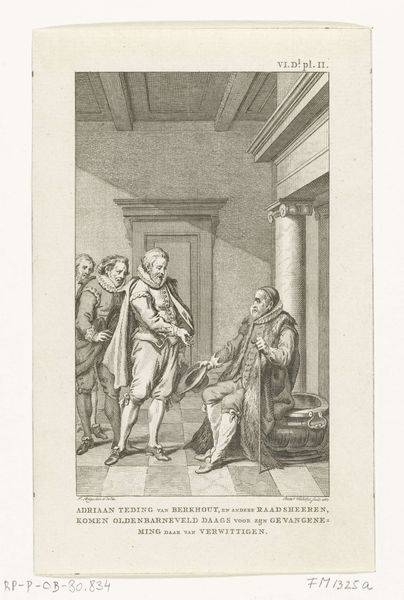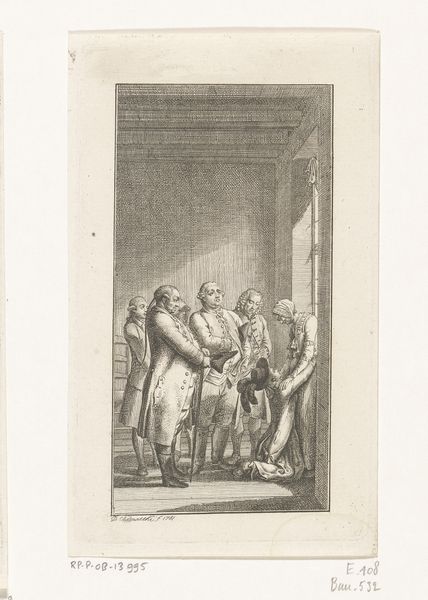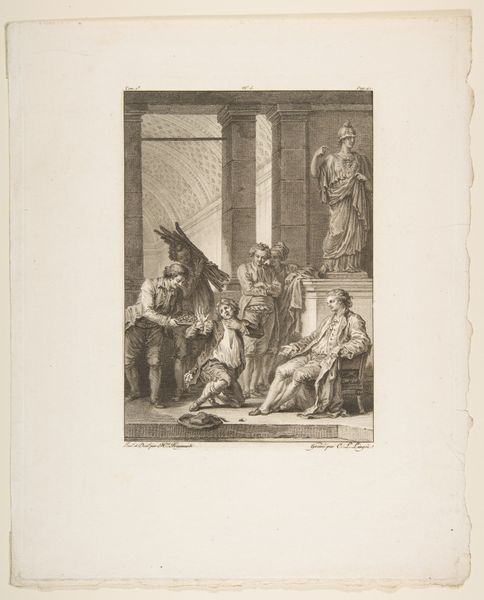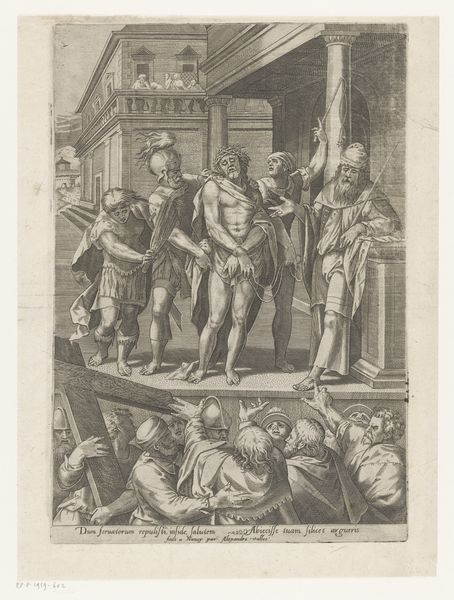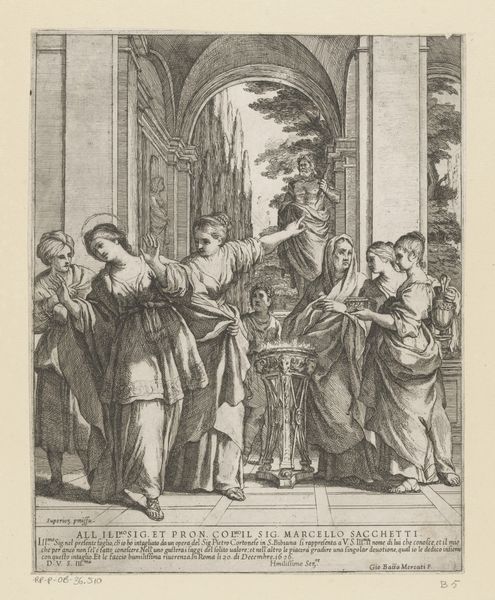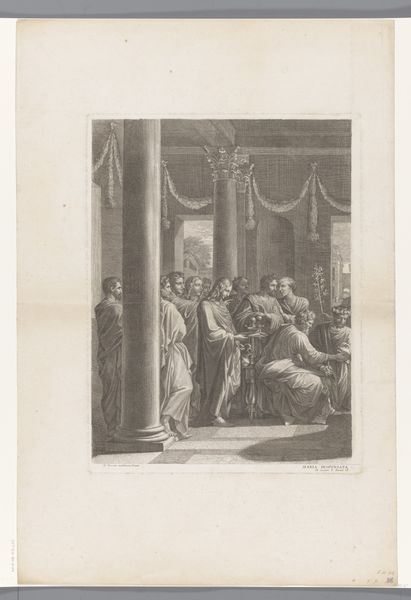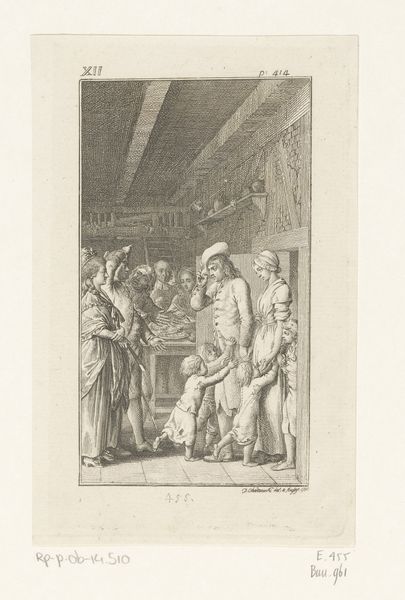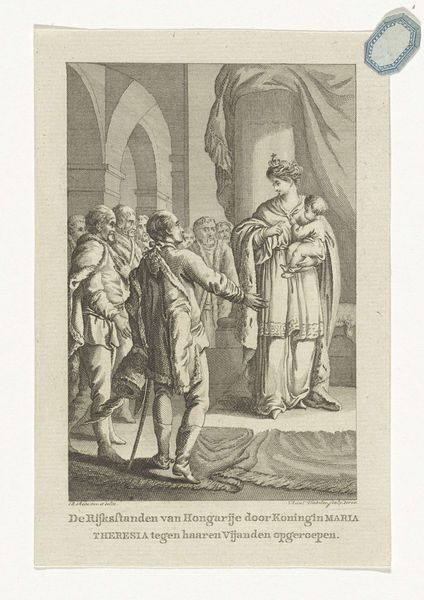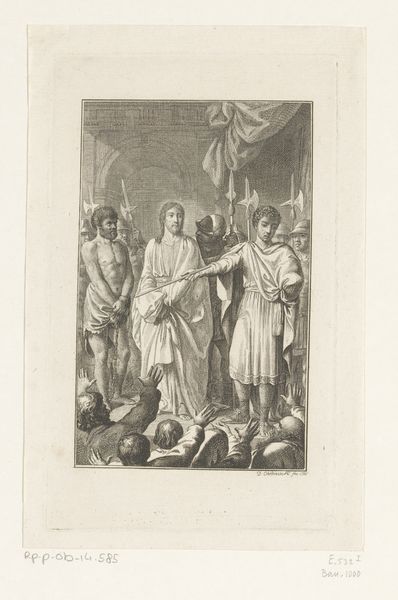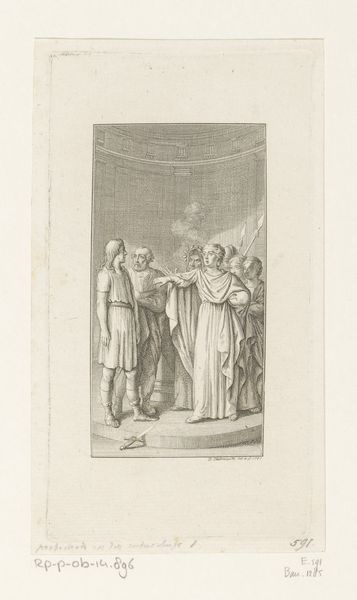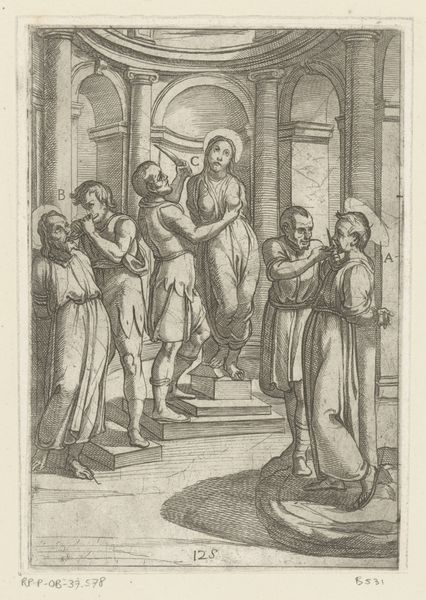
print, etching, engraving
#
narrative-art
# print
#
etching
#
old engraving style
#
figuration
#
line
#
genre-painting
#
history-painting
#
academic-art
#
engraving
Dimensions: height 154 mm, width 95 mm
Copyright: Rijks Museum: Open Domain
Editor: This is "Healing of the Man Born Blind," an etching and engraving by Daniel Nikolaus Chodowiecki from 1784, currently at the Rijksmuseum. What strikes me is the theatricality of the composition. How was this type of narrative art received in its time? Curator: That’s a keen observation. Chodowiecki was deeply embedded in the Enlightenment. Consider how the proliferation of prints made art accessible to a wider audience, particularly the middle class. Scenes like this, depicting biblical narratives with an emphasis on reason and moral instruction, were immensely popular. But the theatre of it… do you think it was merely a style, or did it have a specific function? Editor: Perhaps to engage the viewer, making the religious story feel more immediate and relatable. Was there any debate about depicting religious scenes in such a, dare I say, dramatic fashion? Curator: Absolutely. The representation of religious subjects was a highly charged area, influenced by shifting religious and philosophical viewpoints. Think about the Protestant Reformation's impact on image-making and how different denominations embraced or rejected elaborate displays of faith. This piece, being a print, offered a democratized, domestic version, palatable to a broader audience. It allowed for individual contemplation. Editor: So, this etching functions almost as a moral lesson, easily disseminated through printmaking. It's fascinating how art served as a tool for social and religious discourse. Curator: Precisely. Chodowiecki’s "Healing" reflects the evolving relationship between art, religion, and the public sphere in the late 18th century. Consider its role in shaping popular perceptions and promoting certain values within a rapidly changing society. Editor: I now understand it more as a product of its time and less as just a standalone illustration of a Bible story, that social commentary makes so much sense. Curator: Indeed. Recognizing that cultural and institutional backdrop enriches our understanding, I think.
Comments
No comments
Be the first to comment and join the conversation on the ultimate creative platform.
